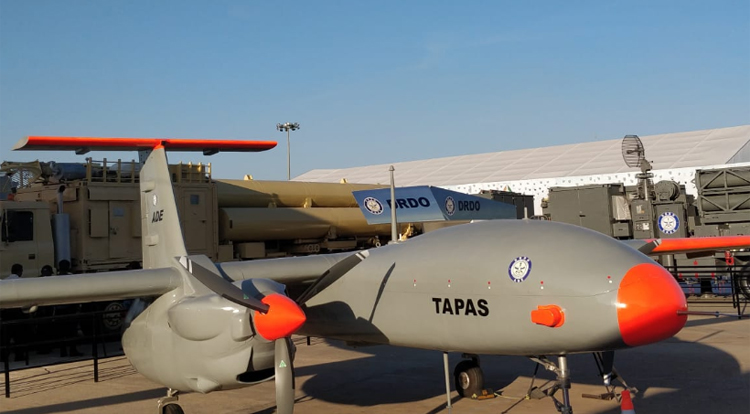SOURCE: AFI


Vice Adm. Krishna Swaminathan, the Vice Chief of the Indian Navy, recently remarked on the state of India’s TAPAS (Tactical Advanced Platform for Aerial Surveillance) drones, noting that “the TAPAS drones in their current form do not entirely meet our requirements.” Swaminathan highlighted the Navy’s interest in acquiring MQ-9B SeaGuardian drones instead, which offer advanced capabilities that better align with the Navy’s current operational needs. However, he expressed optimism about TAPAS’s potential, stating, “We hope the next version of TAPAS will be much better. We look forward to that day when we can make such drones like the MQ-9B, and maybe TAPAS is the right way to go.”
The TAPAS UAV, developed by the Defence Research and Development Organisation (DRDO), is India’s premier long-endurance drone platform, intended for surveillance and reconnaissance missions. While the Navy and Army are keen on indigenous options, Swaminathan’s statement indicates that TAPAS requires further refinement to fully meet the Navy’s high-performance criteria.
DRDO is actively working on modifications to bring the TAPAS platform closer to military standards required by the Navy. These updates include a new, more powerful 220 horsepower engine, which is expected to enhance the drone’s ability to achieve and maintain higher cruising altitudes, addressing one of the current limitations. Additionally, DRDO is addressing aerodynamic drag and weight issues, which will improve flight efficiency and increase endurance. The modifications aim to make TAPAS competitive with established platforms like the MQ-9B, providing a viable indigenous alternative with robust surveillance and reconnaissance capabilities.
The Indian Navy’s operational requirements include persistent surveillance, maritime patrol, and reconnaissance across vast oceanic regions—tasks demanding high endurance, reliability, and advanced payload integration, which the MQ-9B excels at. The MQ-9B SeaGuardian, an advanced variant of the Predator-B, offers enhanced range, improved sensor payloads, and the capability to perform in complex maritime environments. Given its proven record in diverse operational theaters, the MQ-9B has become the benchmark for high-endurance maritime surveillance drones, making it a suitable fit for the Indian Navy’s strategic requirements.
With the TAPAS UAV still evolving, the Indian Navy’s choice to pursue MQ-9Bs bridges the capability gap in the short term, ensuring uninterrupted high-quality surveillance across India’s maritime zones.
Despite the limitations highlighted, both the Indian Navy and the Indian Army have outlined acquisition plans for TAPAS UAVs as DRDO works on the improvements. Each branch intends to procure ten TAPAS units once the required modifications are implemented, with the goal of integrating these indigenous drones into various surveillance and tactical operations. TAPAS’s future versions are expected to include enhanced payload capacities, modular design for specific mission customization, and improved endurance—all of which are crucial for meeting the Indian Armed Forces’ operational needs.